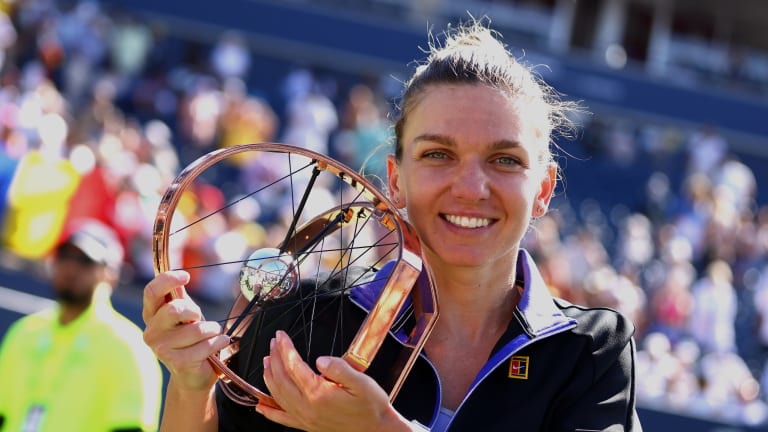The name of the game this time of year in pro tennis is to find the quality level that will help you thrive at the upcoming US Open. With that in mind, Simona Halep and Beatriz Haddad Maia both leave Toronto feeling hopeful.
In a physically grueling match that lasted two hours and 17 minutes, the 30-year-old Romanian beat Haddad Maia in the finals of the National Bank Open, 6-3, 2-6, 6-3. It was Halep’s third title at this event and the 24th Hologic WTA Tour tournament win of her career. More significantly, after a rare year ranked outside the Top 10, Halep now soars up the rankings from No. 15 to No. 6. Said Halep, “When I started the year I was not very confident and I set the goal to be, at the end of the year, Top 10. And here I am.”
It’s also been a great week for Haddad Maia. Her time in Toronto featured five notable wins—’22 Roland Garros semifinalist Martina Trevisan, ’21 US Open finalist Leylah Fernandez, world No. 1 Iga Swiatek, Olympic gold medalist Belinda Bencic, and former world No. 1 Karolina Pliskova. Ranked No. 183 in the world just over a year ago, Haddad Maia will now crack the Top 20.
“Very happy with what me and my team are making from the last months,” said Haddad Maia, who earlier this year won two grass-court tournaments. “I think we are improving a lot every single day. Not even on the matches, but, yeah, outside of the tour when we are practicing. We are taking care of my body. We are doing good things. So, yeah, I feel happy and I feel motivated to go to the next challenge.”
Five years younger than Halep and a winner over her the last time they’d played this past June, the left-handed Brazilian started off as if she was going to blow her elder off the court, taking the first three games. As she opened up rallies with a strong lefty serve and crackled one laser-like forehand and backhand after another into each corner of the court, Haddad Maia suggested the future of tennis, her power and accuracy akin to a new version of Petra Kvitova. “Yeah, at the start it was really tough,” said Halep. “And she's lefty, so it's coming different, the spin. She's very powerful. She's solid. And it's never easy to play against her.”
How best to describe Halep? Certainly, she is tenacious. But more than that, Halep is assertive, able to generate sustained power, depth and accuracy. Propelled by superb footwork, speed and concentration, Halep willed her way back into the match, daring Haddad Maia to maintain and even exceed her high level of play. Point after point and game after game went to Halep in the form of one forced error after another. “I couldn't control myself,” said Haddad Maia. “Simona start to play better, to improve… And then I was trying to find my way to try to be more aggressive.” The future was going to have to wait.
Serving at 3-5, Haddad Maia hoped to hold, regain at least a bit of momentum and make Halep—often a more effective receiver than server—serve out the set. But at 15-30, Haddad Maia double-faulted. At 15-40, Halep sharply shaped a crosscourt forehand that opened up the court tremendously. All Haddad Maia could do was roll a backhand down the middle, at which point Halep laced an untouchable crosscourt backhand.
